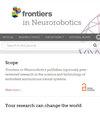Mining local and global spatiotemporal features for tactile object recognition
IF 2.6
4区 计算机科学
Q3 COMPUTER SCIENCE, ARTIFICIAL INTELLIGENCE
引用次数: 0
Abstract
The tactile object recognition (TOR) is highly important for environmental perception of robots. The previous works usually utilize single scale convolution which cannot simultaneously extract local and global spatiotemporal features of tactile data, which leads to low accuracy in TOR task. To address above problem, this article proposes a local and global residual (LGR-18) network which is mainly consisted of multiple local and global convolution (LGC) blocks. An LGC block contains two pairs of local convolution (LC) and global convolution (GC) modules. The LC module mainly utilizes a temporal shift operation and a 2D convolution layer to extract local spatiotemporal features. The GC module extracts global spatiotemporal features by fusing multiple 1D and 2D convolutions which can expand the receptive field in temporal and spatial dimensions. Consequently, our LGR-18 network can extract local-global spatiotemporal features without using 3D convolutions which usually require a large number of parameters. The effectiveness of LC module, GC module and LGC block is verified by ablation studies. Quantitative comparisons with state-of-the-art methods reveal the excellent capability of our method.挖掘局部和全局时空特征,实现触觉物体识别
触觉物体识别(TOR)对于机器人的环境感知非常重要。以往的研究通常采用单尺度卷积,无法同时提取触觉数据的局部和全局时空特征,导致 TOR 任务的准确率较低。针对上述问题,本文提出了一种局部和全局残差(LGR-18)网络,它主要由多个局部和全局卷积(LGC)块组成。一个 LGC 块包含两对局部卷积(LC)和全局卷积(GC)模块。LC 模块主要利用时移操作和二维卷积层来提取局部时空特征。全局卷积模块通过融合多个一维和二维卷积来提取全局时空特征,从而在时间和空间维度上扩展感受野。因此,我们的 LGR-18 网络可以提取局部-全局时空特征,而无需使用通常需要大量参数的三维卷积。消融研究验证了 LC 模块、GC 模块和 LGC 模块的有效性。与最先进方法的定量比较显示了我们方法的卓越能力。
本文章由计算机程序翻译,如有差异,请以英文原文为准。
求助全文
约1分钟内获得全文
求助全文
来源期刊

Frontiers in Neurorobotics
COMPUTER SCIENCE, ARTIFICIAL INTELLIGENCER-ROBOTICS
CiteScore
5.20
自引率
6.50%
发文量
250
审稿时长
14 weeks
期刊介绍:
Frontiers in Neurorobotics publishes rigorously peer-reviewed research in the science and technology of embodied autonomous neural systems. Specialty Chief Editors Alois C. Knoll and Florian Röhrbein at the Technische Universität München are supported by an outstanding Editorial Board of international experts. This multidisciplinary open-access journal is at the forefront of disseminating and communicating scientific knowledge and impactful discoveries to researchers, academics and the public worldwide.
Neural systems include brain-inspired algorithms (e.g. connectionist networks), computational models of biological neural networks (e.g. artificial spiking neural nets, large-scale simulations of neural microcircuits) and actual biological systems (e.g. in vivo and in vitro neural nets). The focus of the journal is the embodiment of such neural systems in artificial software and hardware devices, machines, robots or any other form of physical actuation. This also includes prosthetic devices, brain machine interfaces, wearable systems, micro-machines, furniture, home appliances, as well as systems for managing micro and macro infrastructures. Frontiers in Neurorobotics also aims to publish radically new tools and methods to study plasticity and development of autonomous self-learning systems that are capable of acquiring knowledge in an open-ended manner. Models complemented with experimental studies revealing self-organizing principles of embodied neural systems are welcome. Our journal also publishes on the micro and macro engineering and mechatronics of robotic devices driven by neural systems, as well as studies on the impact that such systems will have on our daily life.
 求助内容:
求助内容: 应助结果提醒方式:
应助结果提醒方式:


